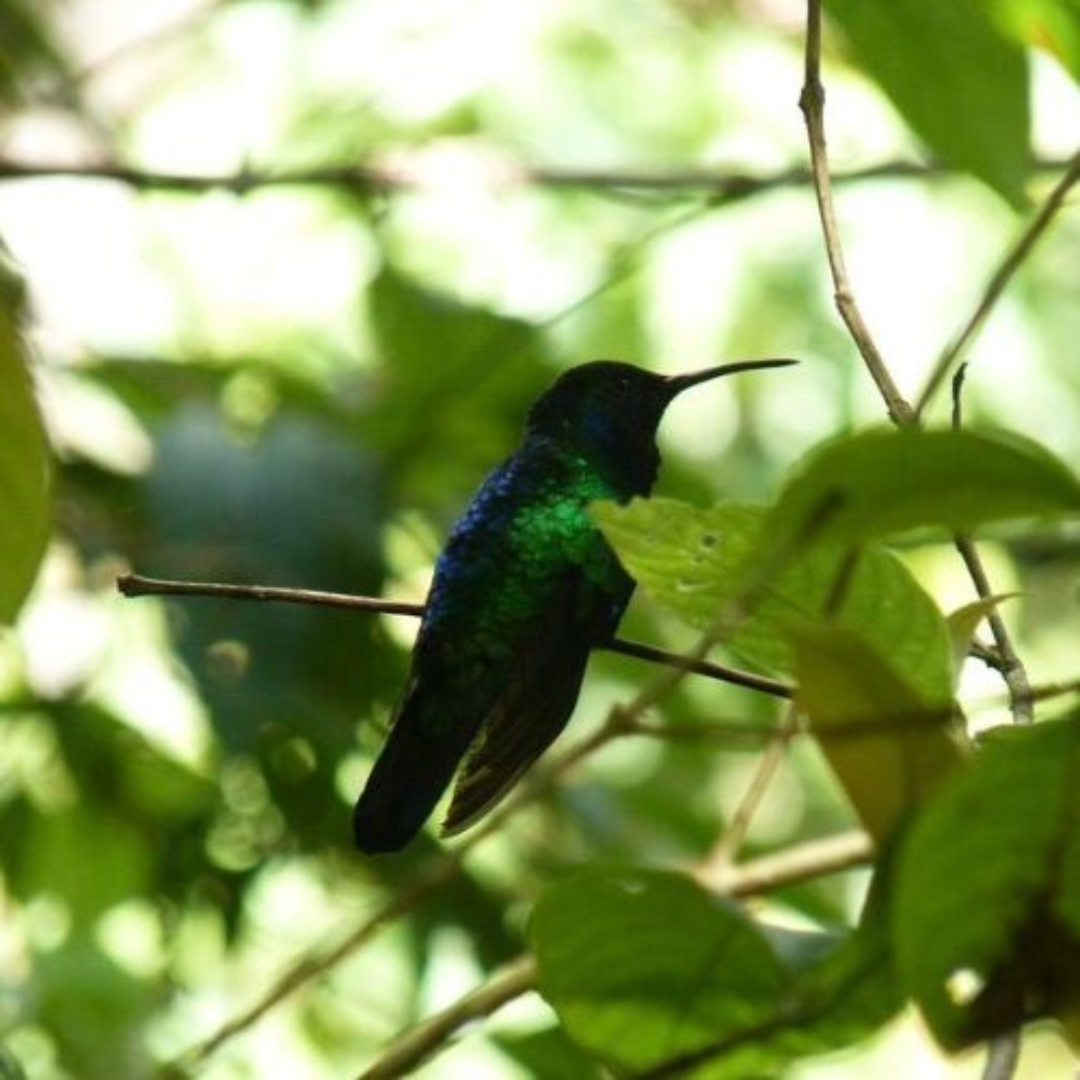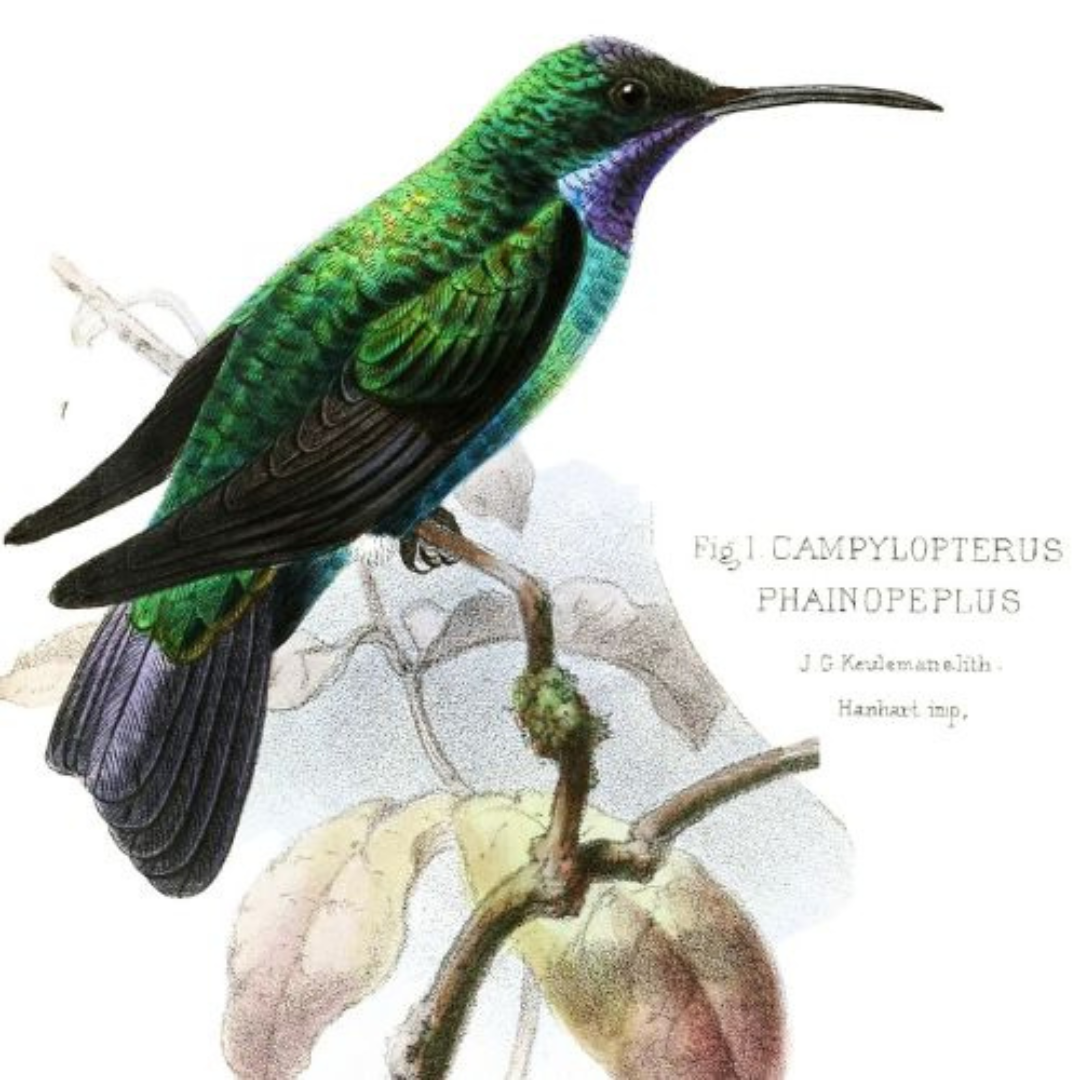After years of attempts to find one of the world’s 10 most wanted bird species — the Santa Marta Sabrewing — a spectacular emerald green and iridescent blue hummingbird, has been officially spotted for the second time since it was discovered in 1946! This new sighting gives conservationists hope for the critically endangered species.


Image: Yurgen Vegay
Unexpected & Exciting Spotting of One of The World’s Rarest Birds!
So how was the rare bird spotted? An experienced local birdwatcher, Yuregen Vega, rediscovered the Santa Marta sabrewing in Colombia, after seeing a flash of blue and green. "I got out my binoculars and was shocked to see it was a Santa Marta sabrewing,” said Vega.
The relatively large hummingbird is only found in the country’s Sierra Nevada de Santa Marta mountains. This is now the second time the species has had a documented sighting since 1946, though the last time it was sighted was 2010, where researchers captured the first-ever photos of the bird.
The Santa Marta sabrewing was listed as one of the top 10 most wanted lost birds by the Search for Lost Birds. It's been a magnet for bird devotees longing to make history by confirming its existence.


Image: Illustration by J.G. Keulemans
The Santa Marta Sabrewing Glistens with Emerald Green and Iridescent Blue Feathers
“It’s like seeing a phantom…And as this rediscovery shows, sometimes lost species re-emerge when we least expect it.” said John C. Mittermeier, Director of Threatened Species Outreach at the American Bird Conservancy.
The Santa Marta sabrewing belongs to the species of hummingbird in the "emeralds" tribe. This vibrant bird has a decurved black bill, with the female's having more curvature, and both have a white spot behind the eye. The bird’s upper parts are glittering emerald green. They have a black face, and their throat and breast are iridescent blue. The rest of this stunning creatures underparts are dark green, and their tail is a dark metallic blue. Pretty cool right? Not only does this rare hummingbird have stunning physical features, it also sings! It makes a plaintive double 'twit-twit', both in flight and display.


Image: Canva
Habitat and Conservation of the Hummingbird
Scientists know little about the mysterious species except that it usually lives in humid neotropical forest at an altitude of 1200 to 1800 metres, and may migrate to higher elevations in the páramo (an ecosystem of grass and shrubs) during the rainy season to search for flowering plants. Much of the forest in the Santa Marta mountains has been cleared for agriculture, and scientists estimate that only 15% of the forest is still intact.
“This rediscovery is tremendous, and it makes me hopeful that we will start to better understand this mysterious and threatened bird,” said Esteban Botero-Delgadillo, Director of Conservation Science with SELVA. He also says that the confirmation that the Columbian region is home to another endemic species strengthens the argument that the government must work with conservationists and local communities to preserve the species and its habitat before it’s too late.
Scientists now plan to search for more Santa Marta sabrewings and stable populations of the species to learn where they live and what threats they face in the wild! We're so happy to hear the gorgeous hummingbird has been rediscovered and efforts to reduce threats to its species are taking place.
For more stories about unique wildlife discoveries and conservation around the world, check out our Eco News category and the blogs below.
World Tiger Day | Are We Saving Tigers From Extinction?
One-Of-A-Kind Rare Albino Tortoise Born In Switzerland!
California Condors Return To Redwood National Park After A 100-Year Absence

